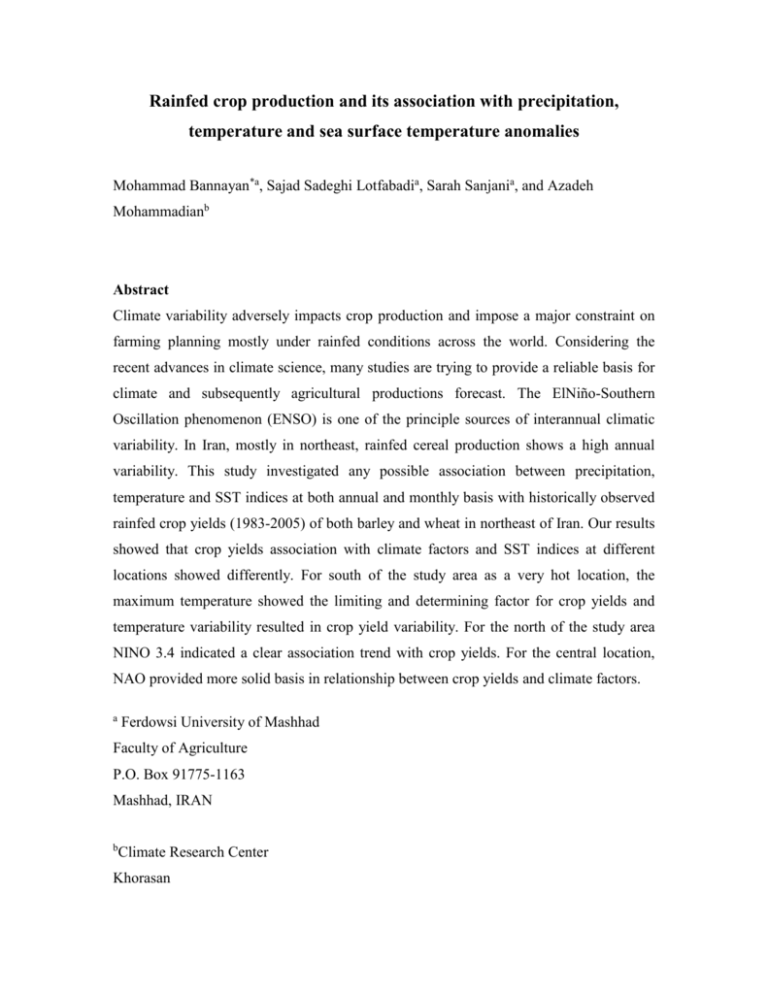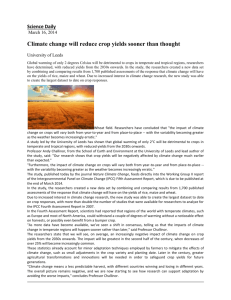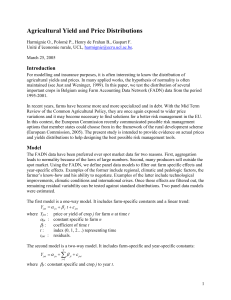Rainfed crop production and its association with precipitation
advertisement

Rainfed crop production and its association with precipitation, temperature and sea surface temperature anomalies Mohammad Bannayan*a, Sajad Sadeghi Lotfabadia, Sarah Sanjania, and Azadeh Mohammadianb Abstract Climate variability adversely impacts crop production and impose a major constraint on farming planning mostly under rainfed conditions across the world. Considering the recent advances in climate science, many studies are trying to provide a reliable basis for climate and subsequently agricultural productions forecast. The ElNiño-Southern Oscillation phenomenon (ENSO) is one of the principle sources of interannual climatic variability. In Iran, mostly in northeast, rainfed cereal production shows a high annual variability. This study investigated any possible association between precipitation, temperature and SST indices at both annual and monthly basis with historically observed rainfed crop yields (1983-2005) of both barley and wheat in northeast of Iran. Our results showed that crop yields association with climate factors and SST indices at different locations showed differently. For south of the study area as a very hot location, the maximum temperature showed the limiting and determining factor for crop yields and temperature variability resulted in crop yield variability. For the north of the study area NINO 3.4 indicated a clear association trend with crop yields. For the central location, NAO provided more solid basis in relationship between crop yields and climate factors. a Ferdowsi University of Mashhad Faculty of Agriculture P.O. Box 91775-1163 Mashhad, IRAN b Climate Research Center Khorasan Mashhad, IRAN *Corresponding author Voice: (+98) - 511- 879-5616 Fax: (+98) - 511- 878-7430 Email: bannayan@um.ac.ir mobannayan@yahoo.com











